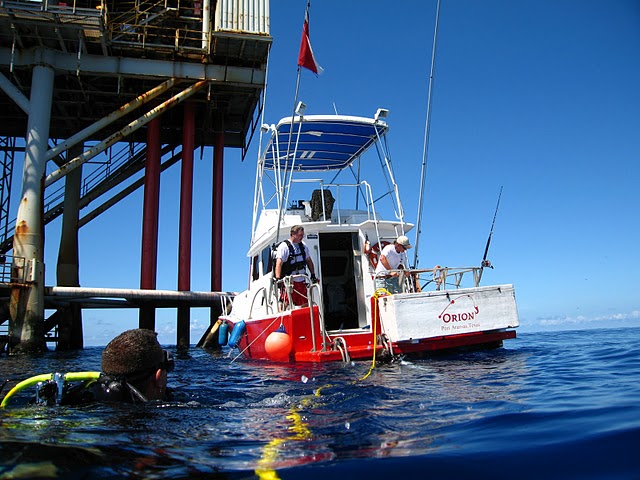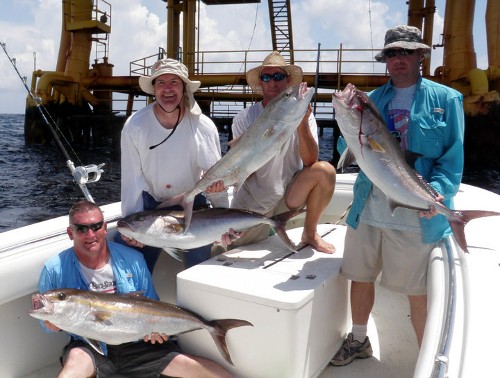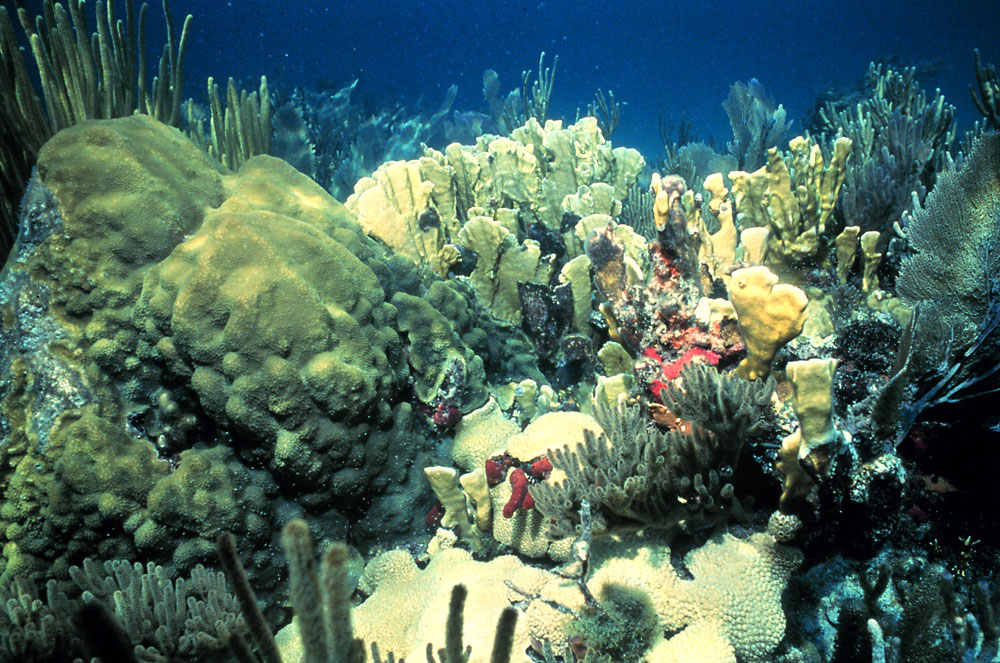 |
| Photo: Mike Miglini |
Rig Removal – Essential Fish Habitat
Artificial reefs and their link to the Gulf fisheries has
been a hot topic for the past few years. Scientists debate whether artificial
reefs increase fish populations by expanding habitat opportunity or simply
attract fish from other, less desirable habitat. It’s been difficult to
determine which viewpoint is correct because artificial reef structures only account
for about 1% of all hard bottom habitat in the Gulf. In either case, the Gulf
of Mexico Fishery Management Council is concerned about the method and rate of
oil and gas platform removal because the structures define the way people fish
in some parts of the Gulf.
been a hot topic for the past few years. Scientists debate whether artificial
reefs increase fish populations by expanding habitat opportunity or simply
attract fish from other, less desirable habitat. It’s been difficult to
determine which viewpoint is correct because artificial reef structures only account
for about 1% of all hard bottom habitat in the Gulf. In either case, the Gulf
of Mexico Fishery Management Council is concerned about the method and rate of
oil and gas platform removal because the structures define the way people fish
in some parts of the Gulf.
In recent years, the installation of new gas and oil
structures has slowed. Additionally, the U.S. Department of Interior created
the Idle Iron policy which requires all oil and gas structures to be removed no
longer than a year after production is finished. Fishermen and conservation
groups are concerned that the demolition and removal of rigs will harm our
fisheries. Unfortunately, the Gulf Council has no authority to control the
removal of rigs in the Gulf, which are under control of the Department of
Interior. The Council has sent a series of letters asking the agencies
responsible for rig removal to reconsider the use of explosives to remove rigs
because explosives are known to kill fish dwelling near those structures. The
Council has also asked that the rate of rig removal be slowed or discontinued until more
information is gathered regarding the effects of structure removal on the
fishery. The letters can be viewed
here.
structures has slowed. Additionally, the U.S. Department of Interior created
the Idle Iron policy which requires all oil and gas structures to be removed no
longer than a year after production is finished. Fishermen and conservation
groups are concerned that the demolition and removal of rigs will harm our
fisheries. Unfortunately, the Gulf Council has no authority to control the
removal of rigs in the Gulf, which are under control of the Department of
Interior. The Council has sent a series of letters asking the agencies
responsible for rig removal to reconsider the use of explosives to remove rigs
because explosives are known to kill fish dwelling near those structures. The
Council has also asked that the rate of rig removal be slowed or discontinued until more
information is gathered regarding the effects of structure removal on the
fishery. The letters can be viewed
here.
 |
| Photo: Mike Jennings |
Many stakeholders have asked the Council to address the
issue of rig removal by designating artificial structures Essential Fish Habitat. The map below shows the area (pink) of the Gulf that is currently
considered Essential Fish Habitat. The red dots mark all known artificial reef
structures in the gulf (approximately 5,127 acres). Although the artificial
reefs themselves are not designated as Essential Fish Habitat, a vast majority
of artificial structures (5,031 acres) fall within the area already designated
as Essential Fish Habitat.
Currently, there are only 98 acres of artificial reef structure located
outside the designated Essential Fish Habitat.
issue of rig removal by designating artificial structures Essential Fish Habitat. The map below shows the area (pink) of the Gulf that is currently
considered Essential Fish Habitat. The red dots mark all known artificial reef
structures in the gulf (approximately 5,127 acres). Although the artificial
reefs themselves are not designated as Essential Fish Habitat, a vast majority
of artificial structures (5,031 acres) fall within the area already designated
as Essential Fish Habitat.
Currently, there are only 98 acres of artificial reef structure located
outside the designated Essential Fish Habitat.

The Gulf of Mexico Fishery Management Council is developing
a document that will consider
designating artificial reefs (structures intentionally placed as reefs and
structures such as oil and gas platforms that are intended for other purposes
but do provide fish habitat) as Essential Fish Habitat. The designation of Essential Fish
Habitat does not give the Council regulatory authority over those areas, but it
does require other federal agencies (including the groups responsible for rig
removal rates and methods) to consult with NOAA Fisheries on actions that will
effect the Essential Fish Habitat.
The recommendations that NOAA fisheries makes to the agencies proposing
action in Essential Fish Habitat are non-binding and serve an advisory role
only.
a document that will consider
designating artificial reefs (structures intentionally placed as reefs and
structures such as oil and gas platforms that are intended for other purposes
but do provide fish habitat) as Essential Fish Habitat. The designation of Essential Fish
Habitat does not give the Council regulatory authority over those areas, but it
does require other federal agencies (including the groups responsible for rig
removal rates and methods) to consult with NOAA Fisheries on actions that will
effect the Essential Fish Habitat.
The recommendations that NOAA fisheries makes to the agencies proposing
action in Essential Fish Habitat are non-binding and serve an advisory role
only.
 While the designation of Essential Fish Habitat mandates the
While the designation of Essential Fish Habitat mandates theCouncil minimize the negative consequences fishing may have on the habitat. (Section
303(a)(7) of the Magnuson-Stevens Fishery Conservation and Management Act), it
is not the Councils intent to limit fishing on artificial reefs if they are
designated Essential Fish Habitat.
The Council plans to discuss an amendment that considers
designating artificial reefs as Essential Fish Habitat at the next meeting, which
is scheduled for June 18 – 21 in Tampa, FL.
designating artificial reefs as Essential Fish Habitat at the next meeting, which
is scheduled for June 18 – 21 in Tampa, FL.

